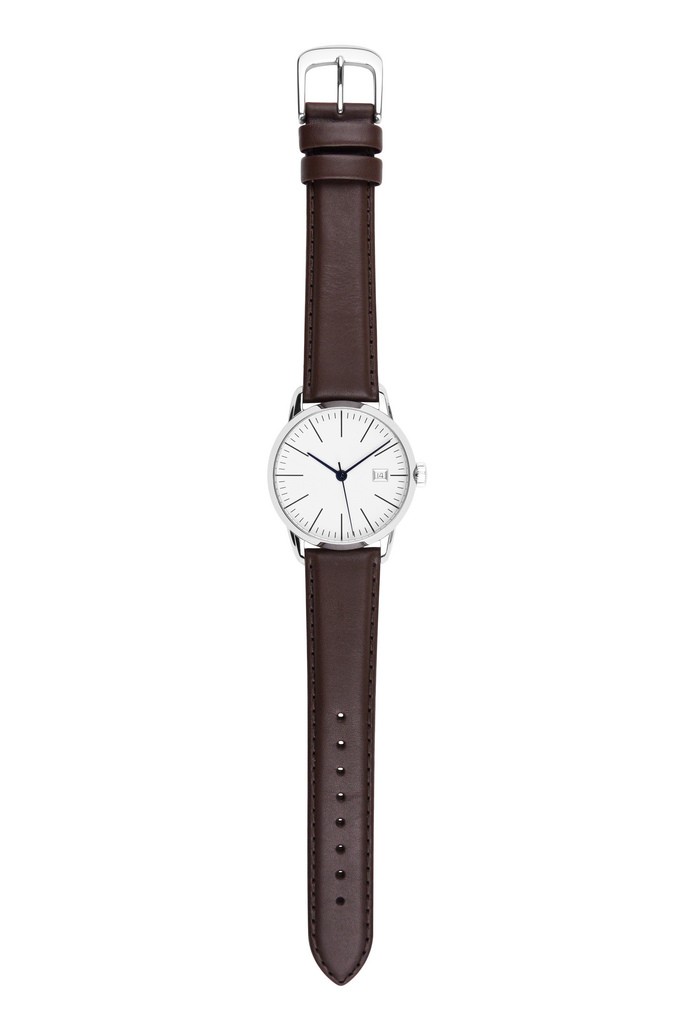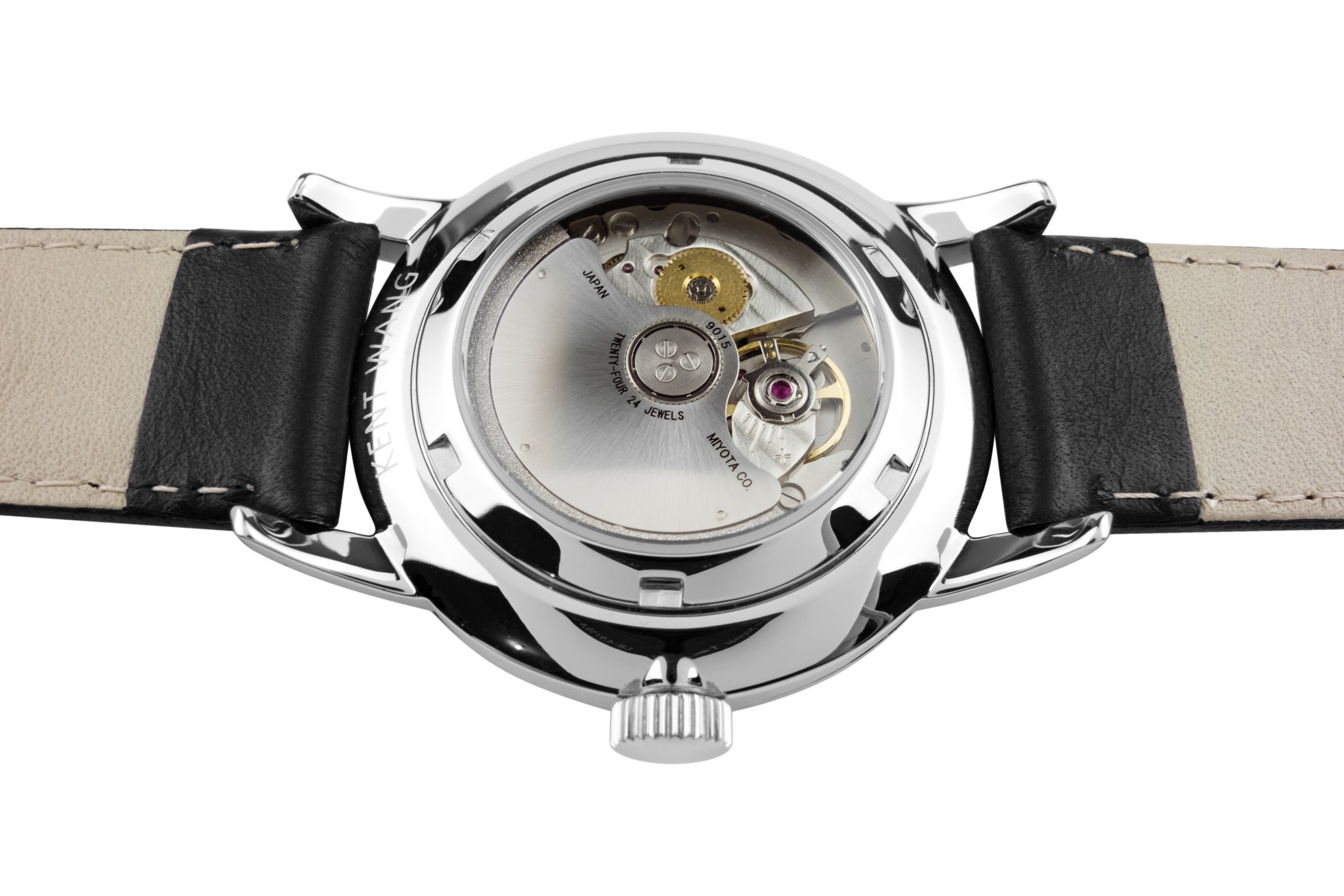The second principle builds on the first: the moment you decide to purchase another watch beyond your first, you'll need a place to put your spare watch(es) when you're not wearing them. (For the only-watch crowd, I imagine the TV cliche of placing your watch on a nightstand holds mostly true to reality.) As the thirteen Watch Primer post discusses, the respective wrist times of the watches you own shrinks in direct proportion to the total number of watches; if you have more than two, then your watches will spend the vast majority of their lives being stored, rather than on your wrist. While it's possible to store your watches in the boxes or packaging they came in, this practice quickly becomes bulky, sprawling, and eventually impracticable - unless you've an abundance of shelf space and don't mind rummaging through several boxes each morning to pick out your watch for the day. For most others, a watch box makes sense as a designated repository for all the watches that aren't adorning your wrist.
The idea behind acquiring a watch box is a familiar one: putting everything in its place, and, in turn, maintaining a place for every thing. For the watch enthusiast looking to expand his or her collection sensibly, it also presents an opportunity to impose what I've come to recognize as a vital rule in my own path to WISdom: the Watch Box Rule.
The rule is a simple one: You can't have more watches than you have spaces in your watch box. If you do, you have two options: sell off timepieces until you're back in the black, or acquire a bigger watch box. Yet there is actually more to the rule than may be perceived at first glance. The pare-down option forces you to take stock of your current collection and to assay every timepiece within it against the others. The wheat will quickly separate from the chaff. The buy-a-new-box option, on the other hand, imposes an additional up-front cost to expanding your collection, and also serves as a physical embodiment and quantification of your watch collection: it will grow bigger as your collection does, gaining more slots and becoming more and more unwieldy and challenging to store as your watches grow in number. And, by forcing yourself to store all of your watches in one place, it serves as an immediate representation of exactly how extensive your watch collection has become.
Even if the prospect of legions of watches assembled in rows and waiting for you to don them sets your heart aflutter, seeing said legions in the metal forces you to consider exactly how much of an investment - of time, effort, space, and attention - the amassing of your collection has cost you. The largest watch box I've owned had ten slots, and there was a time (OK, many times) when I owned more watches than it could accommodate. Staring at those ten slots and their occupants, as well as the watches left homeless by overzealous acquisitions, realizing how infrequently I actually wore some of those watches, made me realize that, for my purposes, my collection had grown over-encumbered. That made me sit down and assess each and every watch, considering how attached I was to it, how often I wore it, and what features it brought to my watch box that weren't duplicated by its neighbors. Doing so allowed me to pare things down enough to accommodate my current 5-watch watch box.
I won't lie; there have been times - many of them, in fact - where I've been tempted to purchase a sixth watch. It isn't hard to find six-slot watch boxes on Amazon or elsewhere. But so far I've managed to keep to the Watch Box Rule. And keeping to it has forced me to constantly reassess my watch collecting goals, with an focus on longer and longer terms. It's made me realize that, of the five occupants of my watch box today, only one has a tenured position: the Rolex Oyster Perpetual 116000. Simply put, it's as close to my Platonic ideal of an everyday watch as I'm likely to get. The Speedy Pro is virtually assured of a lifelong spot - tenure-tracked, if we continue the analogy - but the right new chronograph release in the distant future could remove it from its position. (A smaller diameter, blue dial, and perhaps a column wheel movement would be the requisite factors there.) The rest of my box's slots are, in truth, still up for eventual grabs.
Deciding on the size of your watch box and sticking to the Watch Box Rule can help you determine your goals and priorities for your watch collection, and keep you from making those spur-of-the-moment purchases that could keep you from attaining those goals.
The idea behind acquiring a watch box is a familiar one: putting everything in its place, and, in turn, maintaining a place for every thing. For the watch enthusiast looking to expand his or her collection sensibly, it also presents an opportunity to impose what I've come to recognize as a vital rule in my own path to WISdom: the Watch Box Rule.
The rule is a simple one: You can't have more watches than you have spaces in your watch box. If you do, you have two options: sell off timepieces until you're back in the black, or acquire a bigger watch box. Yet there is actually more to the rule than may be perceived at first glance. The pare-down option forces you to take stock of your current collection and to assay every timepiece within it against the others. The wheat will quickly separate from the chaff. The buy-a-new-box option, on the other hand, imposes an additional up-front cost to expanding your collection, and also serves as a physical embodiment and quantification of your watch collection: it will grow bigger as your collection does, gaining more slots and becoming more and more unwieldy and challenging to store as your watches grow in number. And, by forcing yourself to store all of your watches in one place, it serves as an immediate representation of exactly how extensive your watch collection has become.
Even if the prospect of legions of watches assembled in rows and waiting for you to don them sets your heart aflutter, seeing said legions in the metal forces you to consider exactly how much of an investment - of time, effort, space, and attention - the amassing of your collection has cost you. The largest watch box I've owned had ten slots, and there was a time (OK, many times) when I owned more watches than it could accommodate. Staring at those ten slots and their occupants, as well as the watches left homeless by overzealous acquisitions, realizing how infrequently I actually wore some of those watches, made me realize that, for my purposes, my collection had grown over-encumbered. That made me sit down and assess each and every watch, considering how attached I was to it, how often I wore it, and what features it brought to my watch box that weren't duplicated by its neighbors. Doing so allowed me to pare things down enough to accommodate my current 5-watch watch box.
I won't lie; there have been times - many of them, in fact - where I've been tempted to purchase a sixth watch. It isn't hard to find six-slot watch boxes on Amazon or elsewhere. But so far I've managed to keep to the Watch Box Rule. And keeping to it has forced me to constantly reassess my watch collecting goals, with an focus on longer and longer terms. It's made me realize that, of the five occupants of my watch box today, only one has a tenured position: the Rolex Oyster Perpetual 116000. Simply put, it's as close to my Platonic ideal of an everyday watch as I'm likely to get. The Speedy Pro is virtually assured of a lifelong spot - tenure-tracked, if we continue the analogy - but the right new chronograph release in the distant future could remove it from its position. (A smaller diameter, blue dial, and perhaps a column wheel movement would be the requisite factors there.) The rest of my box's slots are, in truth, still up for eventual grabs.
Deciding on the size of your watch box and sticking to the Watch Box Rule can help you determine your goals and priorities for your watch collection, and keep you from making those spur-of-the-moment purchases that could keep you from attaining those goals.






